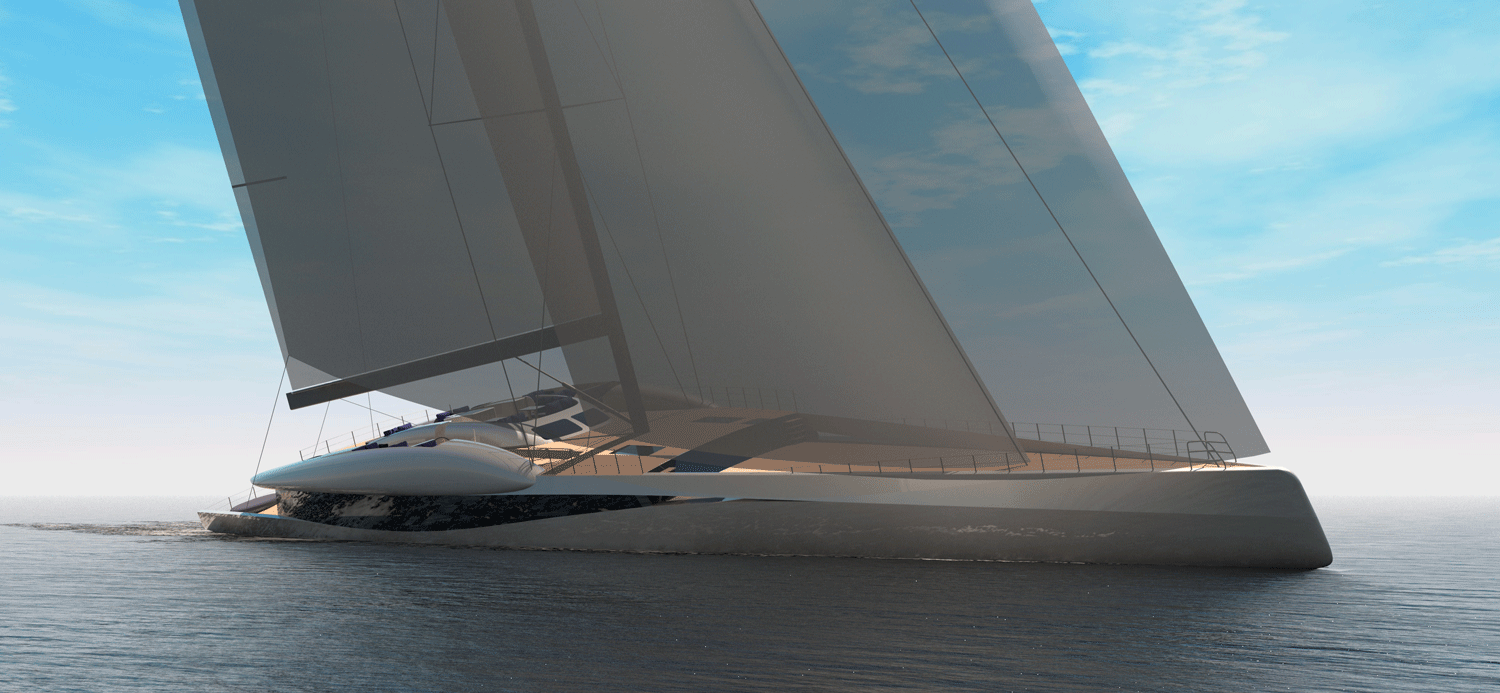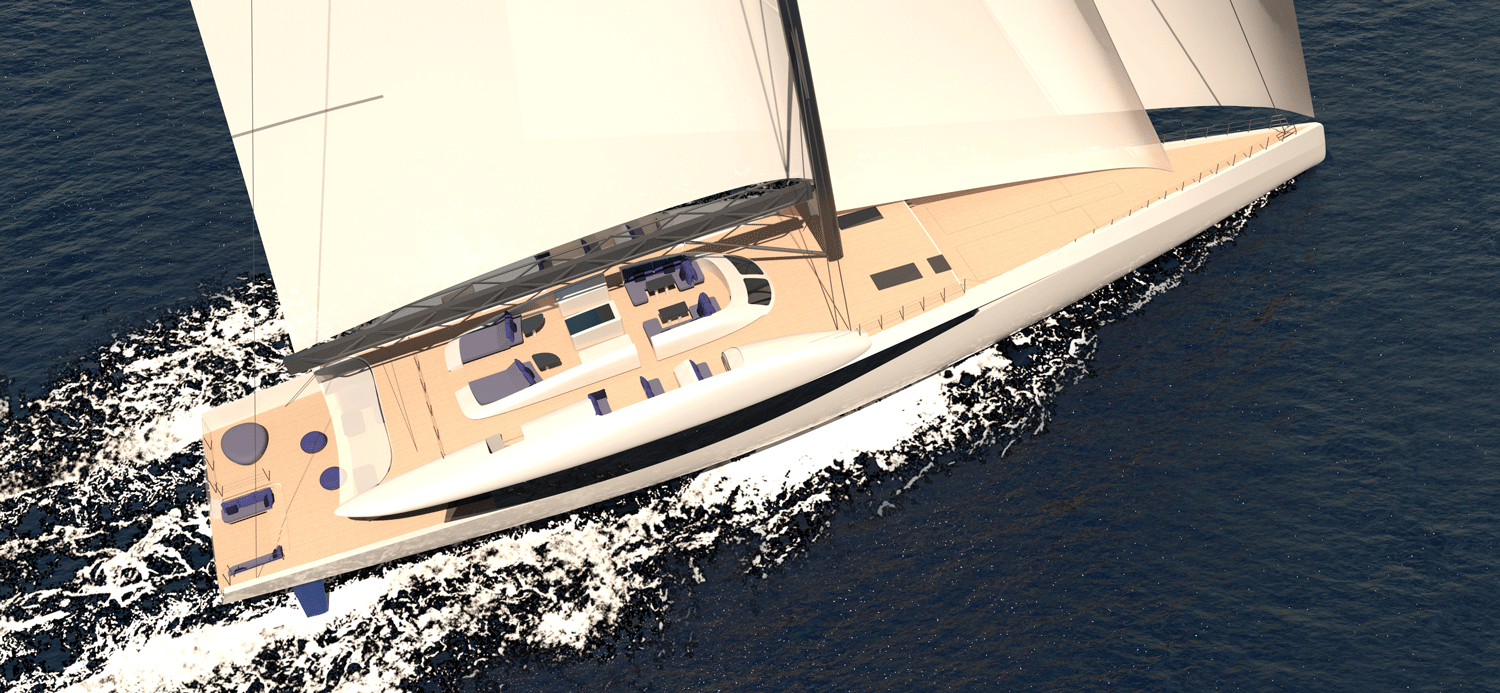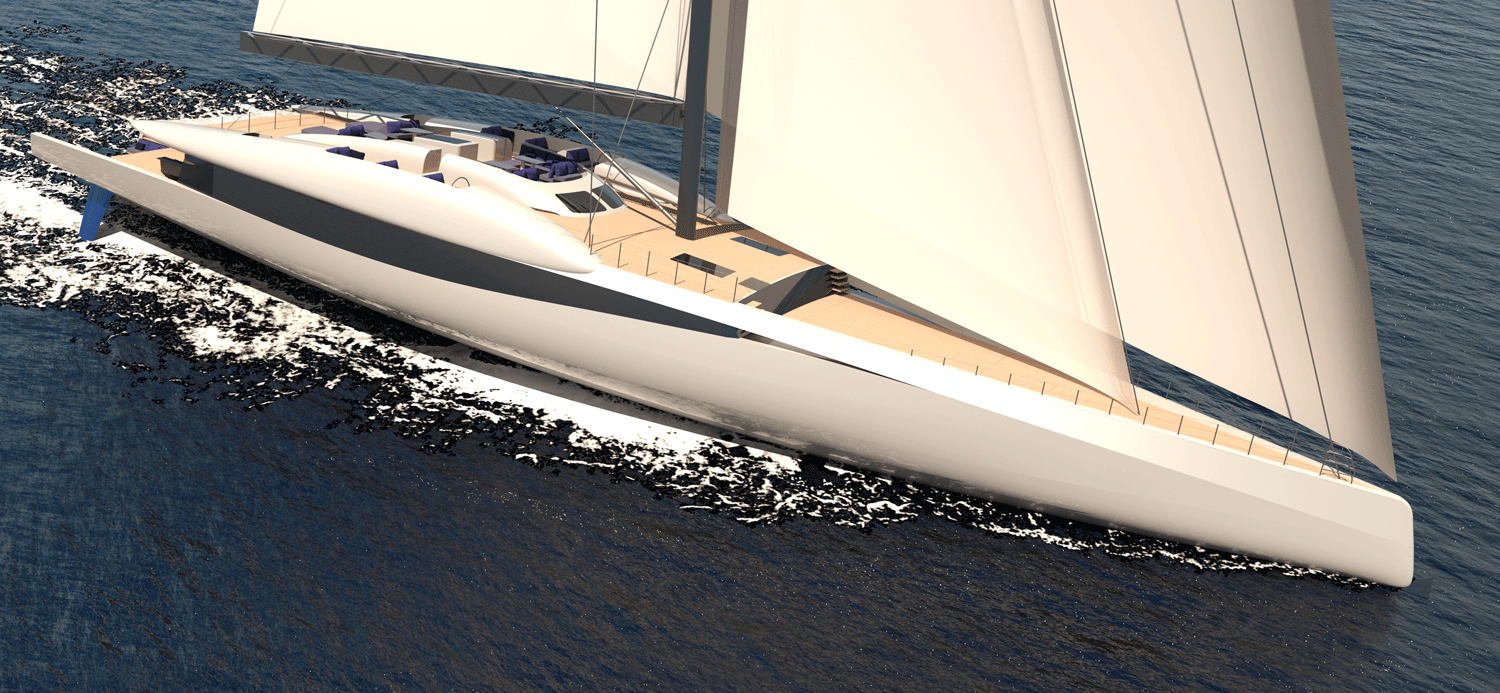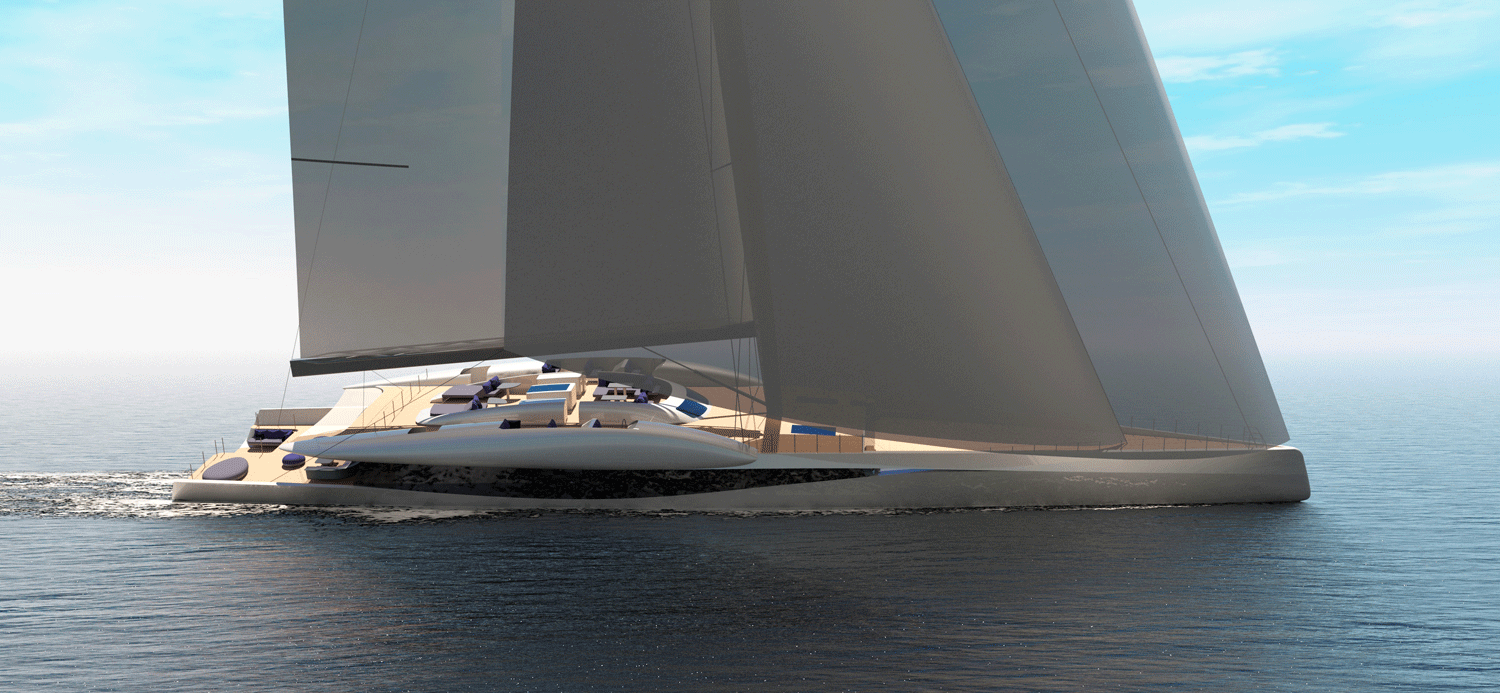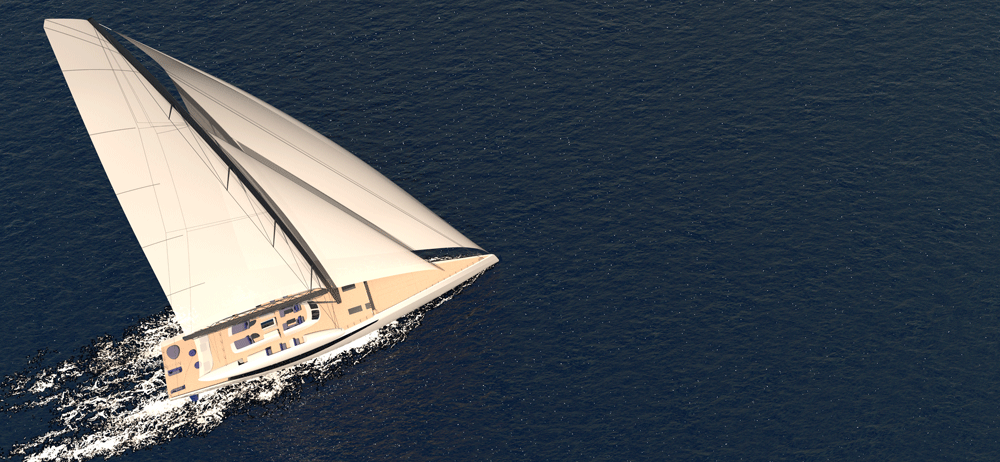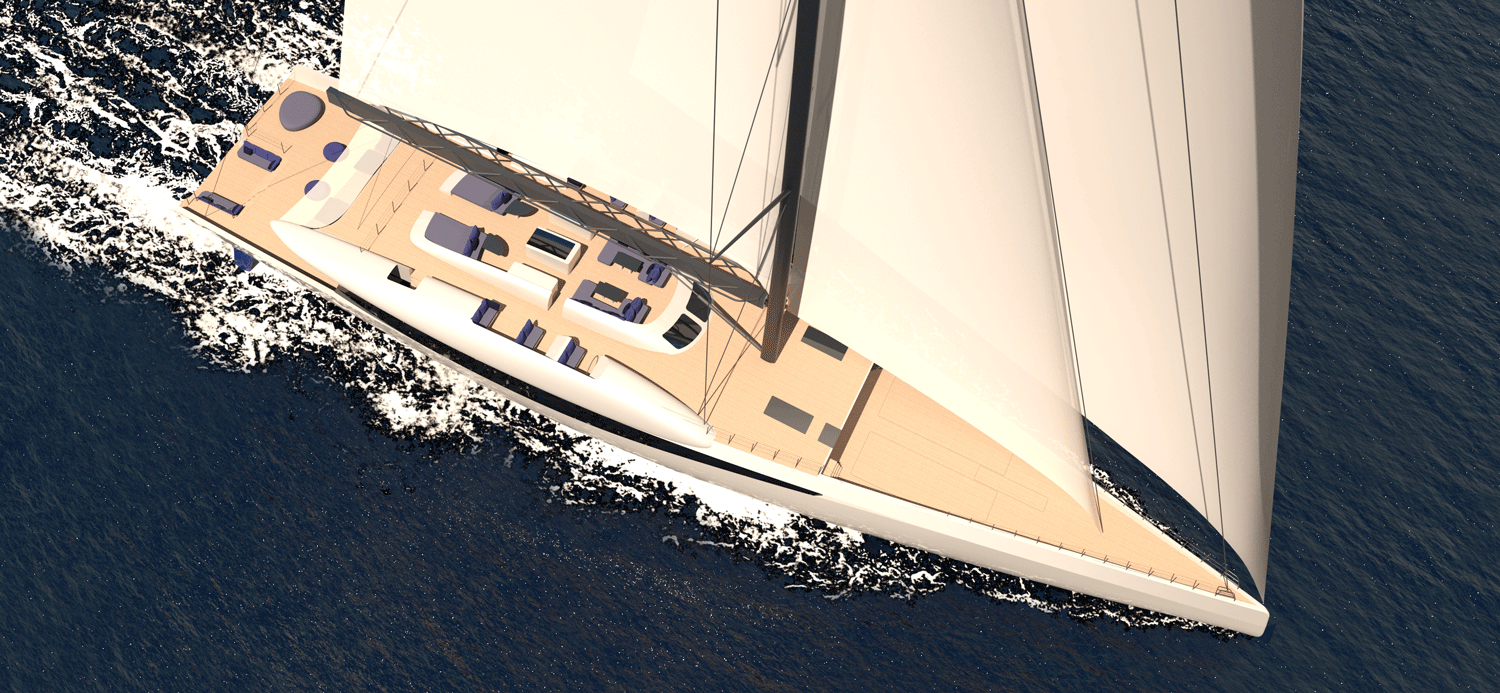Hell hath no Fury
The heavenly sub-500GT Fury 500 from Van Geest Design and Rob Doyle Design combines power and performance with prodigious spaces.
16 September 2021
Advertisement
It’s one of the great head-scratchers of the super-sailer design world – how to create the space of a motor yacht in a sailing yacht of a similar length.
Great volume motor yachts have become somewhat prevalent in recent years (for better or for worse), but a sailing yacht just doesn’t afford the same opportunities to create towering superstructures and the sorts of rounded displacement or semi-displacement hulls most usually employed for motor yachts.
Moreover, there’s that classic paradox – that the overall cost of similarly sized motor and sail yachts will be similar, but the cost per cubic metre is far higher on a sailboat.
Earlier this summer, however, design and naval architecture studios Van Geest Design and Rob Doyle Design showed the fruits of a collab they had been working on – the Fury 63.
Advertisement
The 63 metre sailing yacht concept was an expression of intent to create a sailing superyacht with internal volumes (705GT in the case of the 63) some 50 percent larger than sailboats of a similar length currently on the market. It was a concept that clearly struck a keel chord.
Following the release of the Fury 63 design in June, notes Pieter van Geest, they have had “a lot of requests to study a sub-500GT version”.
The result is a new Fury concept called the Fury 500, which borrows key styling and design characteristics from its larger sibling and reimagines them in a yacht that comes in at 499GT, thus negating the additional restraints and regulations that are activated once the 500GT barrier is crossed.
Chief among those borrowed design elements is a full beam master suite that, once again, takes pride of place on the main deck – a rare commodity on a sailing yacht of any size, and usually only found on motor yachts at this size point.
The sleek hull and reverse stem hint at strong performance – the Fury 500 is clearly designed to appeal to someone who might like to join the superyacht regatta circuit – and the deck layout and sail handling has been considered so as to mitigate the need for a large crew to deploy sails or handle a spinnaker for downwind thrills.
The Fury has a further trick up its sleeve though – a hybrid propeller regeneration system which enables silent running and the possibility for extended quiet modes using energy storage rather than running a diesel genset. Here, too, the Fury is looking to lead, with van Geest stating: “A preferred option is to go hydrogen fuel cell technology which gives zero emission capabilities.
“Going hydrogen fuel cell future-proofs the Fury 500 and allows the yacht to have complete access to Zero Emission Zones which are being introduced worldwide, with the first zone in Europe being the Norwegian fjords from 2026,” he adds.
While it’s easy to dismiss the overall concept as another non-viable dream design, both studios offer exceptional pedigree. Rob Doyle also has considerable experience at the practical end of big sailing yacht design, having been instrumental – under Ron Holland – in the technical development of the naval architecture and rig design for the mighty 2003-launched, 77.5 metre Mirabella V, the largest single-masted sloop built to date with a rig that towers 88.5 metres above the waterline.
Both designers will be present at the upcoming Monaco Yacht Show to discuss the Fury – in calm terms – with interested parties.
Advertisement
Advertisement
Advertisement


